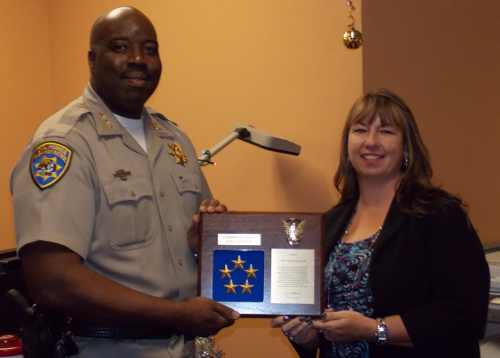The network of Marine Protected Areas (MPAs) in California’s coastal waters, from the California/Oregon state line to Mexico, is now complete.
Nineteen MPAs became effective Wednesday in the Northern California coastal region between the California/Oregon state line and Alder Creek, near Point Arena in Mendocino County.
“We have completed the nation’s first statewide coastal system of marine protected areas,” said Cat Kuhlman, deputy secretary for oceans and coastal matters at the California Natural Resources Agency. “What this means for the future of California’s oceans and the coming generations that will enjoy them, is thrilling.”
California encompasses approximately 5,285 square miles of coastal state waters. The coastal portion of the statewide network of MPAs now includes 119 MPAs of varying designations, five recreational management areas and 15 special closures, that combined cover approximately 16 percent of all open coast state waters.
Approximately half of California’s new or modified MPAs are multiple use areas, with the remaining in no-take areas. The MPAs were developed to be consistent with California’s landmark Marine Life Protection Act (MLPA), the first statutory mandate of its kind in the nation.
The MLPA required that California’s MPAs be redesigned based on the best available science, with identified goals and objectives, and with the advice and input of stakeholders and experts to create a statewide network.
“The Department of Fish and Game is incredibly proud of the work that we did, along with the Fish and Game Commission and the stakeholders in each region to create these designated areas,” said Department Director Charlton H. Bonham. “Nowhere more so than in Northern California where the MPAs balance the needs of the future with the history of ancestral fishing practices among North Coast tribes.”
The North Coast regulations include a provision for federally recognized tribal members to continue harvesting and gathering fish, kelp and shellfish as they have for countless generations.
The provision will allow non-commercial take to continue where there is a record of ancestral take by a specific tribe, consistent with existing regulations, in MPAs other than State Marine Reserves.
“This is a story of what went right. Thanks to an extraordinary collaboration, the final plan ensures the MLPA goal of sustainable marine ecosystems can be achieved while tribal traditional gathering and fishing continue in marine conservation areas,” said Priscilla Hunter, chairwoman of the InterTribal Sinkyone Wilderness Council. “We thank the Creator, and are very pleased that North Coast residents stood in solidarity with the tribes.”
The North Coast region covers approximately 1,027 square miles of state waters from the California/Oregon state line south to Alder Creek near Point Arena in Mendocino County.
Developed pursuant to the MLPA, the North Coast network that goes into effect today includes 19 MPAs, one State Marine Recreational Management Area, and seven special closures, covering approximately 137 square miles of state waters and 13 percent of the region.
The new MPAs include four of the five pre-existing MPAs on the North Coast. The MPA at Punta Gorda (Punta Gorda State Marine Reserve) was removed from the network.
A complete listing of all North Coast MPAs, including detailed regulations and maps, can be found at www.dfg.ca.gov/mlpa/ncmpas_list.asp .
The Department of Fish and Game’s MPA mobile Web site, located at http://www.dfg.ca.gov/m/MPA , was updated Wednesday to reflect the new MPAs going into effect.
The mobile Web site allows the public to locate any current MPA boundaries and regulations by using an interactive map or searching by name, county or general area. A mobile device’s GPS can also be used to find and track a person’s current location relative to any MPA.
In addition to the mobile Web site, boaters can view MPAs on nautical charts or other background maps by visiting MarineBIOS at www.dfg.ca.gov/marine/gis/viewer.asp , DFG’s interactive online marine and coastal map viewer.
For more information on the North Coast MPAs or the MLPA, please visit www.dfg.ca.gov/mlpa .
California North Coast Marine Protected Areas Map









